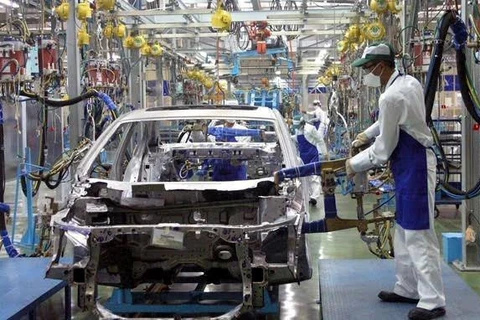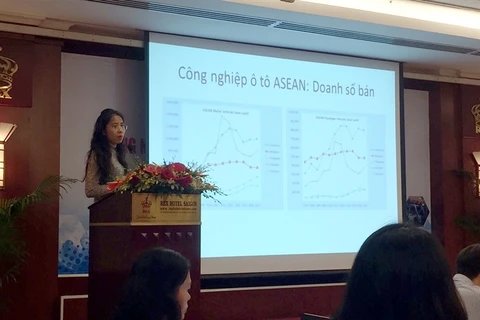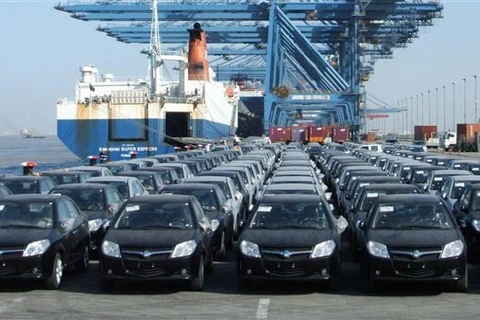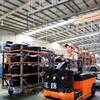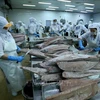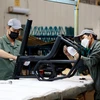 The domestic automobile parts industry has failed to reach the set target despite support from the Government. (Photo: VNA)
The domestic automobile parts industry has failed to reach the set target despite support from the Government. (Photo: VNA) Hanoi (VNS/VNA) - The domestic automobile parts industry has failed to reach the set target despite support from the Government, said Nguyen Thi Tue Anh, deputy director of the Central Institute for Economic Management (CIEM).
Speaking at a seminar on policies, barriers and solutions to developing the industry in Hanoi on October 30, Anh said the industry still had a low localisation rate (or rate of local part supply).
She said Vietnam needed to promote the development of support industries to compete with other countries in the region.
"It is important to have policy research related to the automotive and automotive support industries to promote the use of domestic automobile parts," said Anh.
Vietnam has 358 automobile-related manufacturing enterprises, including 50 auto assembly businesses, 45 car chassis and body manufacturers and 214 auto part producers.
The number of auto part producers is reportedly much lower than in Malaysia and Thailand, which have 385 units and 2,500 units respectively.
The industry produces a number of simple parts such as components for chassis, trunks, cabinets, car doors, tires and tubes, radiators, brake lines, electrical wires and wheel rims. Vehicles with nine seats or fewer typically have low localisation rates.
According to Luong Duc Toan, an official from the Ministry of Industry and Trade’s Department of Industry, firms only achieved high localisation rates in the production of trucks and buses of 10 seats or more. Locally manufactured special-purpose vehicles had a local parts rate between 45 and 55 percent.
He said the parts were mainly produced and imported by enterprises funded by foreign direct investment (FDI). More than 90 percent of all part suppliers in Vietnam were FDI firms.
Deputy General Director of Toyota Motor Vietnam (TMV) Shinjiro Kajikawa said the Vietnamese automobile market had not had stable regulations, leaving investors hesitant and keeping domestic production low.
TMV’s output in Vietnam is much lower than in other ASEAN countries, according to Kajikawa.
He said market fluctuations and low output kept the localisation rate low and limited the network of parts suppliers. The cost of making automobiles in Viet Nam was 10-20 percent higher than production costs of imported cars from other ASEAN countries.
Toan said market capacity was limited by auto assemblers and many different models, which makes it difficult for automakers and part producers to invest in developing production. Part suppliers also found it impossible to access the automobile production chain in foreign countries.
Kajikawa said the auto industry could not develop without the growth of the market, domestic assembly, manufacturing and support industries. The domestic support industry’s parts need to be more competitive in quality, cost and delivery.
In 2017, Vietnam imported nearly 3.17 billion USD worth of parts for automobile production. Exports of components and spare parts reached 4.4 billion USD.
About 300,000 vehicles were sold, making up about different 150 models. Some of the best selling cars were from Toyota Motor Vietnam, Truong Hai Auto Corporation and Thanh Cong Hyundai Company.-VNS/VNA
VNA
